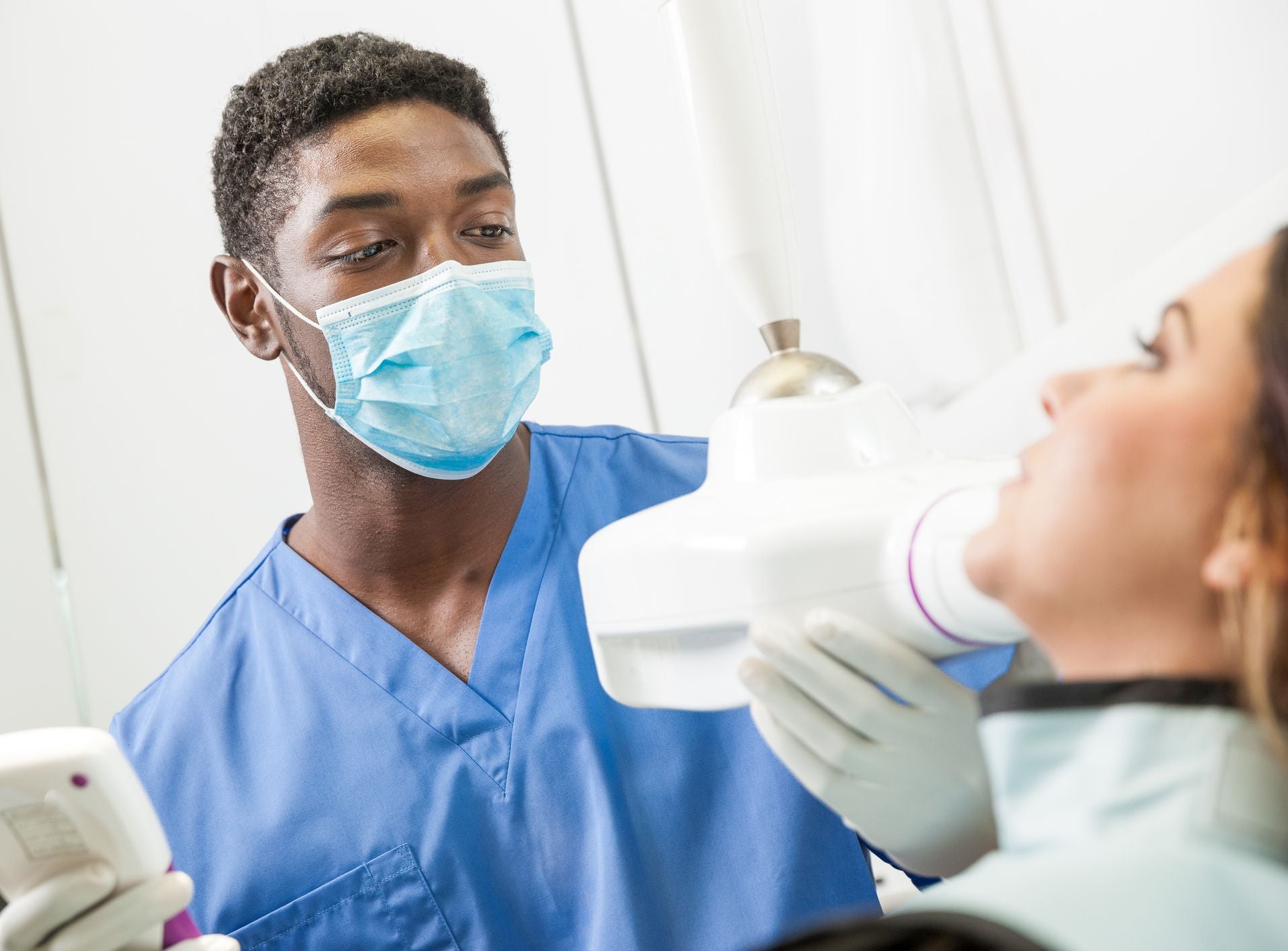Thinking about becoming a dentist? That might be a smart move. A U.S. News & World Report ranked dentists as the number nine job in its 2021 100 Best Jobs in America. This was based on factors such as a healthy work-life balance and good pay.
If this intrigues you, you may be wondering how much it costs to become a dentist. It’s important to remember that the cost of tuition alone does not typically include all the expenses involved. In this blog, we will discuss what it will cost to become a dentist.
How much does it cost to apply for dental school?
Before you think about your potential dental school cost, you have to think about the costs required for applying to dental school. To be able to apply for dental school, most schools will require you to take the Dental Admissions Test. This will currently set you back $495. That fee does not include any materials you need to purchase to study for the exam.
Once you’ve made it into dental school, here is a breakdown of all the costs you may encounter:
How much does dental school cost?
Like most higher education institutions, the answer to “how much is dental school?” depends on whether you attend a private or a public school. The average cost for four years of dental school at a public school in the 2019-2020 school year was $205,019. This figure does not include any additional time for a specialty. The average cost for four years at a private school was $335,536.
Be aware that when you are researching the cost of tuition at different schools, you may see a breakdown of tuition costs for each year. However, you are not locking in those rates at the time of admission, so tuition may rise in the following years.
Instruments and Supplies Fee
Dentistry school provides hands-on practical training. To do the work, you will need instruments and supplies. Your first year will likely consist of observing in clinics and you may need supplies such as masks, gloves and glasses.
As you progress through school, you will need different equipment and supplies, so there is a different cost for each year in school. Most schools provide their own estimates, but the average cost of instruments and supplies for all four years for the 2019-2020 school year was $22,761.
Instructional Materials
You can’t forget about the cost of books when adding up your dental school costs. Books and any other instructional materials on average will cost $6,948 for all four years. Try to reduce the cost by buying used books if possible.
Lab and Clinic Fees
The last two years of dental school include mostly clinical study where you are learning and working with patients. These fees charged by schools can include a variety of items that will be used in the lab and clinics therefore they vary from each institution. In order to get an accurate assessment of your costs, it is best to check with your particular school.
Miscellaneous Fees
Each school may have additional fees unique to them. These include everything from student rec fee, student technology fee, and student health fees. They can range from $100 to more than $1,000 so it’s best to check with the individual schools you are applying to for any miscellaneous fees.
Professional Exams
To become licensed as a dentist you must also pass a professional exam. The National Board Dental Examination previously consisted of two parts, however, it is transitioning to the Integrated National Board Dental Examination (INBDE). Currently, students only take Part II of the National Board Dental Examination.
The INBDE began administration on August 1, 2020 and currently costs $680. Your graduation year can determine which exam you will take. No matter which exam you take, it is another expense to budget for.
How to Manage Dental School Expenses
If you’re concerned about how much it costs to become a dentist, know that there are many options to help manage your dental school expenses.
Scholarships and Grants
A variety of scholarships and grants are available for dental students. These are beneficial because recipients do not have to repay them. You may be able to find these monies through your school or dental association, as well as through federal and state governments.
Student Loans
Student loans are a form of aid that do need to be repaid. You can take these loans out through the federal government or through private companies. Remember that the interest rates on graduate federal student loans are higher than the interest rates on undergraduate federal student loans. There is also a cap on how much can be borrowed. Private student loans may offer more competitive interest rates and different loan terms.
Refinance Student Loans After Graduation
According to the American Dental Education Association, in 2019 the average student loan debt for a recently graduated indebted dental student was $292,169. Facing that amount of debt may seem daunting, however, there are ways to save on your loans after graduation.
Refinancing your dental student loans can be a great way to reduce your monthly payment, save on interest costs and modify your loan terms. Refinancing is obtaining a new student loan to pay off previous student loans. This can allow you to combine multiple loans into one, making it easier to manage your student debt.
Here is an example of how student loan refinancing could help save you money:
Based on the average student loan debt of $292,169 with a 25-year loan term and the average interest rate of 5.3%, if you refinanced all your student loans you could see a savings of more than $25,000 on interest costs, a savings of $113 per month and 5 years less on your loan term. This is possible if you qualify for a lower interest rate of 3.18%.
To get an estimate of how much you could save with your loans, use ELFI’s Student Loan Refinancing Calculator.*



